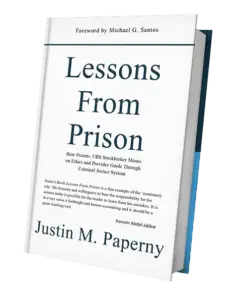The Bureau of Prisons has quietly implemented one of the most meaningful updates since the First Step Act passed in 2018. It’s called the Conditional Placement Date (FCPD), and it changes how earned time credits are applied toward early release and reclassification.
For years, people in federal custody earned credits that never seemed to count. Now, with the Conditional Placement Date in place, those credits finally have measurable value.
Time earned is time applied — and that changes everything for defendants and their families watching the calendar.
How We Got Here
When the First Step Act became law, its purpose was clear: reward effort and reduce unnecessary time in custody. But the rollout was messy.
The Bureau of Prisons had to create an entirely new system from scratch — tracking participation, assessing risk, and managing eligibility. Programs were limited, the PATTERN tool was untested, and recordkeeping was inconsistent. Many people completed classes and saw nothing happen.
That frustration is what makes the Conditional Placement Date different. It’s now the anchor for major classification and transfer decisions inside the BOP. Staff can project when a person’s earned credits will make them eligible for halfway house, home confinement, or supervised release — and plan accordingly.
In short, the system finally reflects what Congress intended: fairness, predictability, and progress.
The Lesson: Why This Update Actually Matters
Judges and probation officers talk about accountability. The BOP, in practice, measures it through participation, discipline, and consistent progress.
This update makes that measurement real.
“The Conditional Placement Date gives effort a measurable result.”
Here’s what that means in practice:
- Earlier reclassification to lower custody levels
- Fewer last-minute transfers before release
- Facility placement that matches time left and programming needs
- Clearer communication for families tracking progress
It’s not a loophole or a favor — it’s the system finally rewarding people who engage. For defendants serious about rebuilding credibility, this makes preparation matter again. As Michael Santos often says, “You can’t ask for leniency without evidence that you’ve earned it.” The Conditional Placement Date turns that evidence into an official timeline.
Why This Helps People In Federal Prison
Look, the system isn’t perfect. But this change makes it more predictable.
If you’re putting in the work — completing programs, staying discipline-free, following your release plan — you can now expect those efforts to show up in your placement and timeline.
For example:
- If you’ve earned six months’ worth of credits, your Conditional Placement Date moves closer.
- Your classification should now adjust accordingly.
- You could be moved to a minimum-security camp or transferred to a Residential Reentry Center (RRC) earlier than before.
That’s progress you can actually see on paper.
And it’s a win not just for people in custody — but for case managers, wardens, and staff who’ve been waiting for a policy that makes sense operationally.
What Families Need To Know
For families, this policy update is huge.
It means your loved one’s time credits now have teeth.
You can (and should) ask:
- Has the FCPD been calculated?
- Are classification and transfer decisions being based on it?
- Has my loved one’s participation in programs been logged and credited?
Transparency is the key. The more you understand these steps, the better you can advocate.
What You Can Do Now
If you’re in federal custody — or supporting someone who is — treat this as a chance to bring structure to the process. The FCPD gives you something tangible to work toward.
Start here:
- Confirm eligibility. Some offenses remain excluded, and disciplinary infractions can delay credits.
- Keep documentation. Save proof of every completed program or productive activity.
- Request the worksheet. Ask staff for the Conditional Placement Date or time-credit summary.
- Advocate respectfully. If something doesn’t align, raise it with your case manager.
- Plan early. Use the time before release to secure housing, employment, and family support.
Progress inside should lead to preparation outside. That’s the purpose of this reform — to turn measurable work into measurable time.
Frequently Asked Questions
Q: Does the Conditional Placement Date guarantee early release?
A: Not automatically. It tracks when earned credits make someone eligible for earlier transfer or supervision — but participation, conduct, and program availability still matter.
Q: How can families verify that credits are being applied?
A: Request the FCPD worksheet from the case manager. It’s the clearest way to confirm how credits affect release and classification.
Families often ask what these new dates actually mean in practice. If this update feels unclear, you’re not alone. In our weekly sessions, we share real examples from people who’ve gone through it. You can sit in on a live session or reach out privately if you want help reviewing your own timeline.
Written by Justin Paperny, federal prison consultant and founder of White Collar Advice, who helps defendants prepare for sentencing and rebuild after prison.



